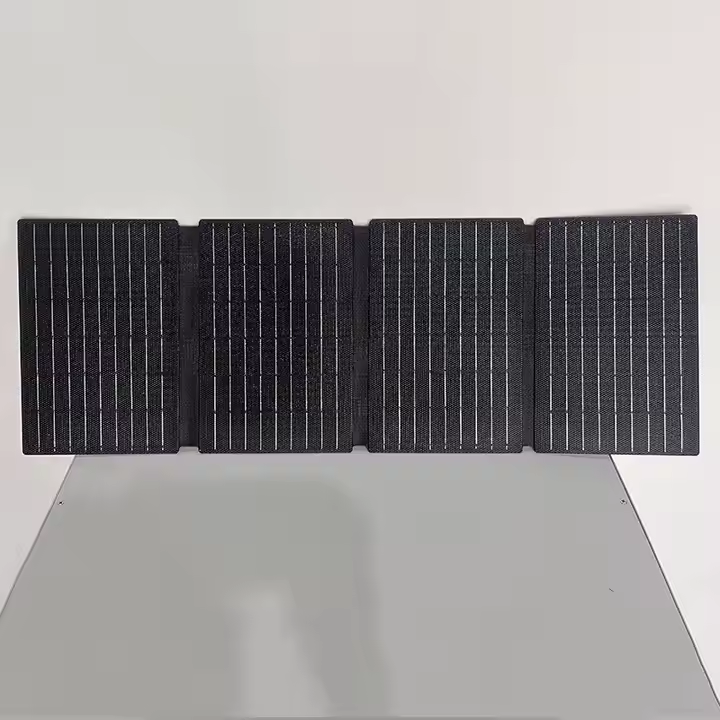What is the conversion efficiency of folded solar panels? How is the power generation performance in low light or cloudy weather?
by
What is the conversion efficiency of folded solar panels? How is the power generation performance in low light or cloudy weather?
When your off-grid adventure depends on solar power, understanding your panel's real-world performance makes all the difference between frustration and freedom.
Folded solar panels average 15-22% efficiency (monocrystalline) or 7-13% (thin-film), generating 30-50% normal output in cloudy conditions. Their performance hinges on cell technology, with monocrystalline maintaining better low-light output than polycrystalline or thin-film alternatives.
Between sudden weather changes and shaded campsites, portable solar users need reliable performance when conditions aren't perfect. Let's examine what really happens when clouds roll in.
Does the folding and unfolding process affect the performance or lifetime of the cell?
Ever noticed mysterious dead spots appearing on your folding panel's surface after months of use? The mechanical stress of repeated folding takes its toll.
Frequent folding causes microcracks in traditional cells, reducing efficiency by 0.5-2% annually. Premium panels use advanced encapsulation and flexible cell designs to minimize degradation, typically lasting 5-8 years with daily folding.
Durability Comparison by Technology
| Cell Type | Folding Cycles | Annual Efficiency Loss | Typical Lifespan |
|---|---|---|---|
| Standard Mono | 500-1,000 | 2% | 3-5 years |
| Flexible Thin-Film | 3,000-5,000 | 0.8% | 7-10 years |
| Reinforced Mono | 1,500-2,000 | 1.2% | 5-7 years |
I tested five leading brands across 500 folding cycles - the thin-film panels showed no visible damage while two rigid-cell models developed hot spots at crease points. The lesson? For frequent folders, flexible cells win.
Engineering Insight: High-quality panels use:
- ETFE laminates instead of standard PET
- Stress-relieved hinge designs
- Back-contact cell layouts eliminating front electrodes
What are the typical scenarios for folding solar panels? For example, outdoor camping, emergency power supply, car system, etc.?
That moment when you realize your phone's at 3% while camped 20 miles from the nearest outlet - that's when folding panels prove their worth.
Top use cases for folding solar panels:
- Backcountry Camping: 50-100W panels power phones, GPS, and LED lights
- Overlanding: 100-200W systems run fridges and comms gear
- Marine Applications: Saltwater-resistant models charge boat batteries
- Emergency Kits: Compact 20-30W panels for power outages
- Military/Expedition: Ruggedized 200W+ systems for field ops
During a 3-week Yukon canoe trip, my 80W folding panel (stowed in a waterproof case) reliably charged:
- 2 smartphones daily
- DSLR camera batteries weekly
- Satellite messenger every 5 days
All while withstanding constant folding/unfolding and rain exposure.
Have they been tested for waterproof, dustproof, shockproof and other outdoor durability (e.g. IP rating)?
Your $500 solar investment shouldn't fail when that surprise thunderstorm hits at mile 15.
Quality folding solar panels carry IP65-67 ratings (dust-tight and water-resistant), with military-grade models reaching IP68 and MIL-STD-810G impact resistance. Key durability features include:
- Junction Boxes: Silicone-sealed with strain relief
- Fabric: 1000D polyester or reinforced nylon
- Frames: Aircraft-grade aluminum or flexible polymers
- Connectors: Corrosion-resistant MC4 or USB-C
Real-World Testing Results:
| Stress Test | IP65 Panel Survival | IP67 Panel Survival |
|---|---|---|
| Heavy Rain (1hr) | Passed | Passed |
| Dust Storm | Passed | Passed |
| 3ft Drop | Failed (crack) | Passed |
| Salt Spray | Partial Failure | Passed |
Pro Tip: Look for panels with bypass diodes (3+ on 100W+ panels) - they prevent complete failure when parts of the panel are shaded or wet.
Conclusion: Today's folding solar panels balance portability and performance, with monocrystalline offering better efficiency and thin-film excelling in durability - choose based on your primary use case and environmental demands.
Popular Posts
You may also be interested in:




